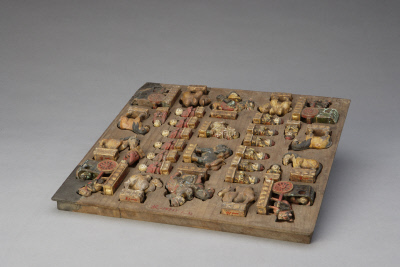 |
| The Mongolian chess kept at the Palace Museum. [Photo/dpm.org.cn] |
Mongolian chess
Mongolian chess, also called shatar, probably first appeared when Genghis Khan went on his western expedition during the 13th century. It was then introduced to the center of China during the early Qing Dynasty.
Mongolian chess is quite similar to Chinese chess, but the form, rules and ways to move the chess pieces are more like international chess. There are 32 pieces total. The piece that corresponds to the king is depicted by a cavalier riding on a horse. The piece corresponding to the western bishop is a two-humped camel. The piece corresponding to the knight is, not surprisingly, a standing horse. Rooks are represented by horse-drawn carts. The pawn is smaller than the other pieces and it can look like a small sitting person.